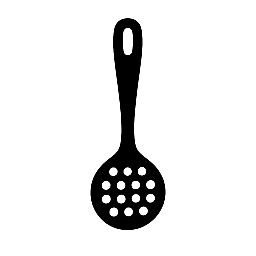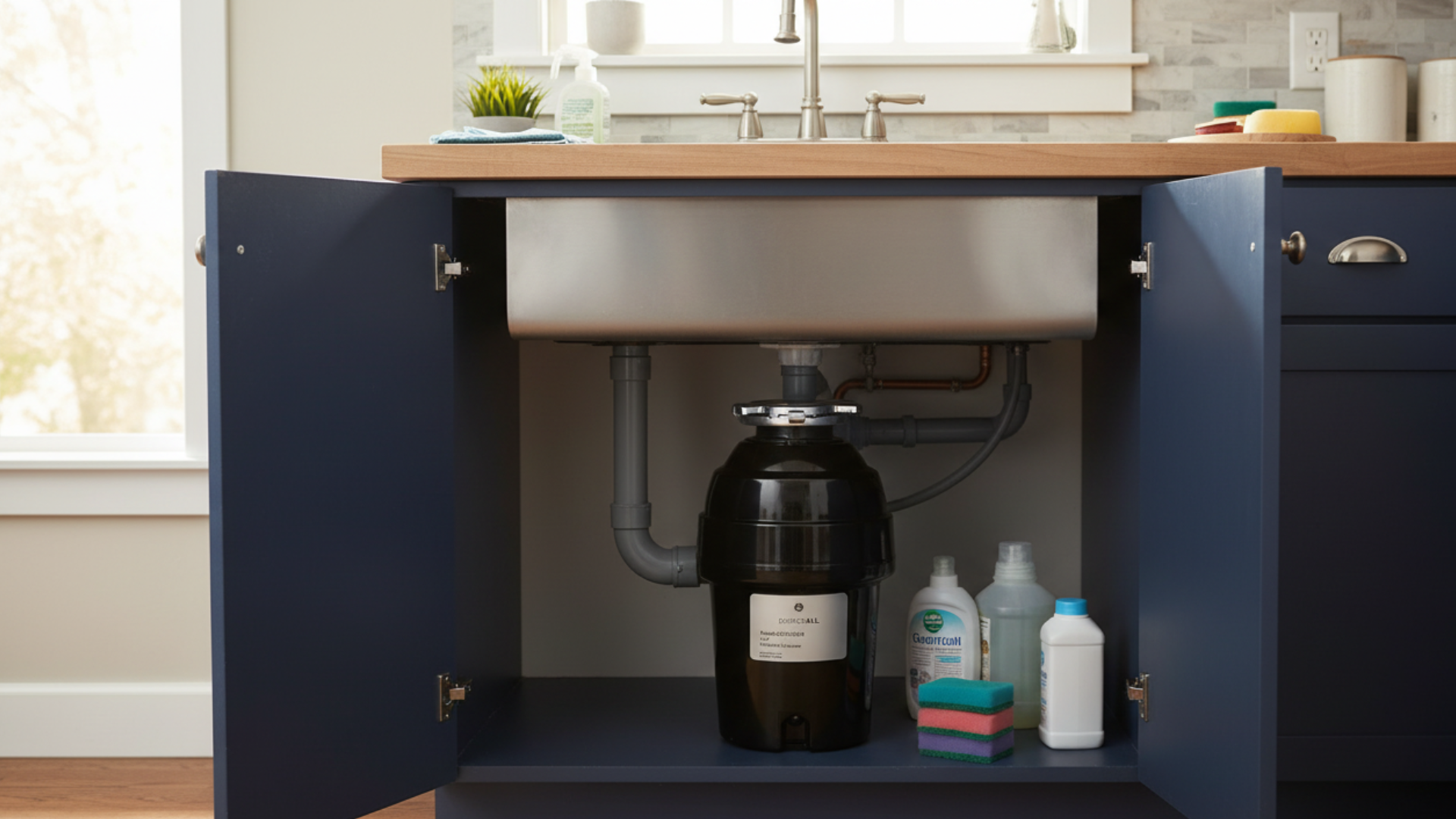Let’s be honest — garbage disposals are one of those kitchen appliances we take for granted until they stop working. You throw a switch, things vanish, and matters move on. But here’s the thing: Your disposal isn’t a magic black hole where you can just toss anything and it will take care of it.
Actually, there are a few items that will tear it apart in a heartbeat and that’s when the sink is clogged, the disposal doesn’t work and you are out a plumber’s fee.
I’ve learned this the hard way, and I’m guessing you’d rather not make the same mistakes. So here are the biggest non-disposables, the things you should never, ever put in the garbage disposal (even if it’s only tempting for a second).
Grease, Oils, and Fats
This is the big one, and it’s one that people screw up all the time. You cook bacon, and that pan is greased. The sink is right there. It’s so tempting! just pour it down the drain and run some hot water, right?
Don’t do it. Seriously, don’t. This is what happens when you pour grease down the garbage disposal When you dump grease in the garbage disposal and run water, it could be that everything is going fine at the moment, especially if it’s hot. But when that grease moves through your pipes and cools, it hardens. It adheres to the lining of your pipes like plaque in an artery. Over time, that accumulation becomes more and more dense and solidifies with food chunks until it turns into such a stubborn clog that water can hardly make it out.
The issue is not only in your disposal unit—but in all the plumbing downstream. It might not be obvious right away that there’s a problem, but in a few weeks or months, you’re dealing with a slow drain or a total clog. And when you call out a plumber to snake that mess, you’ll wish you just wiped that grease into the trash with a paper towel.
This goes for all fats, including bacon fat, butter, cooking oil, salad dressing, meat drippings—and even the oily brine from canned goods like tuna. Let it cool and solidify in the pan, scoop it into the garbage, or pour it into a vessel that you can dispose of. You’ll save yourself years of headaches and an extra ton of frustration, and your pipes will last years longer.
2. Fibrous Vegetables: The String Theory of Clogged Drains
If you’ve ever struggled to eat celery because of those stringy bits, you have probably wondered what they’re for. But your garbage disposal has the same difficulties with them.
Fibrous vegetables are inherently tough as part of nature’s design. Celery, asparagus, artichokes, corn husks, rhubarb, and onion skins are some consider examples. These vegetables, when chopped, retain long, stringy fibers that are not easy to break down. When you put them in your disposal, they’re not chopped up. Instead, the fibers wrap around the blades and the grinding mechanism like thread wrapping around the spool of a sewing machine.
I learned this lesson with asparagus ends. I dumped a few handfuls in the disposal, turned it on for what felt like an excessive amount of time, and assumed everything was okay. Two days later my disposal was screeching and grinding and barely able to turn. When I finally got it apart (NOT fun), there was a knotted mass of asparagus fibers wrapped around everything.
The strings actually make a net and trap other food particles, worsening the problem over time. Eventually, your garbage disposal will die, get noisy, or stop working altogether. And to remove these wrapped fibers may require you to take the unit apart, which means either getting your hands dirty or hiring someone else to do it.
When you’re cutting up vegetables with obvious fibers, feel free to throw those scraps in the trash or compost. You’ll make your disposal more efficient by keeping it running when you want to use it.
3. Coffee Grounds: The Great Disposal Myth
This one surprise people because coffee grounds look so innocuous. They’re tiny, they smell nice, and they’re already ground up. Others believe they are able to clean or deodorize the disposal. The truth? Grind coffee, and you’re clogging your garbage disposal and pipes. Coffee grounds won’t dissolve in water. Instead, they form clumps and a compact, paste-like material. Just think about what happens when you make coffee—the grounds are compressed in the filter. The same happens in your pipes, only that it’s worse because there are usually grease and other debris tied up with it.
If you regularly flush coffee grounds down the garbage disposal, then these coffee grounds will settle in the trap beneath your sink and further down the line in the drain. They collect in dips and bends of the pipes where they slowly accumulate until the flow of water is significantly reduced. Pretty soon, you’ve got a slow drain or a too-tight plug.
I’ve read people argue small amounts are fine, but why take the chance? Coffee grounds are good for your garden or compost pile. They are nitrogen-rich and plants love them. Put them to good use, rather than causing you plumbing trouble. If you really have to rinse a few grounds down the drain, make sure you run a lot of water— and I mean a lot —to get them all the way through your system.
4. Starchy Foods: The Expanding Menace

Pasta, rice, bread, oatmeal, and potato peelings might seem harmless, but they’re among the worst things you can feed to your garbage disposal. It’s how these foods react when they are moistened.
Starchy foods soak up water and swell. The pasta remnants in your drain don’t simply rest there — they absorb water and expand, turning into a dense, gluey conglomerate. Rice behaves similarly, too, increasing up to two or three times in size. This stuffing goop doesn’t come off the pipes very easily. Instead, it forms a sticky clog that catches everything else heading down the drain.
Bread and other flour-based products are even worse in some ways. They literally become a paste when you add water and grind them. It’s just like making dough in your pipes. This paste clings to the walls of your disposal and to your pipes where it hardens as it dries, forming a concrete-like layer that is extremely difficult to break up.
Potato shells in particular are an issue, since they give out starch when pulverized. While the peels themselves might digest, they leave behind a starchy film which can stick together over time. Add in some grease to this mix and you have a recipe for a very persistent clog.
The fix is simple: Just scrape these food sources into the garbage before you rinse your dishes. If a couple chunks do go down, it’s not the end of the world. And please don’t pour a pot of pasta water full of starchy noodles chunks into the drain.
5. Hard Items: Bones, Shells and Pits
This should be obvious, but people try it anyway. Garbage disposals can be tricky, and hard substances are certainly not what they’re made to grind through.
Bones are a common mistake. That chicken wing bone or pork chop bone looks small enough, but your disposal’s blades aren’t really razor-sharp knives — they’re dull hammers that pulverize food against a stationary grind ring.
Solid bones are not pulverized; they simply bounce around, potentially damaging the blades, loosening parts, and even causing fractures in the grinding chamber. You may also hear that bone shuddering around inside, making a terrible rattling noise.
Fruit stones/pits are the same. The pits of a peach, avocado, and cherry are super solid objects. They’re not going to break down, and trying to grind them can burn out your disposal’s motor as it fights something it can’t overcome. Even small stones could be troublesome if they happen to get caught in the grinder.
Eggshells are contentious. Some people swear their disposal handles fine with them and there’s an old wife’s tale that that eggshells sharpen the blades (they don’t – the blades aren’t sharp to begin with).
The actual ‘problem’ with eggshells is the membrane lining the inside. The shell, which can also attach itself to parts of the disposal, and the crushed shells forms a sandy residue that can settle in pipes, especially if there is any grease buildup.
Shrimp, crab, lobster, and clam shells – none of these are easy to break up with a disposal in your home. While they may shatter into smaller fragments, these tiny shards can damage your appliance and clog your drains.
If it’s so tough that you wouldn’t want to chew on it with your teeth, don’t throw it in the disposal. They should go into the garbage, no ifs, ands or buts.
Other Notable Mentions That Don’t Belong in Your Disposal

While these are the top five, there are a couple of other things that commonly go in disposals that really shouldn’t.
Nuts are too hard, and they can become a paste when processed (especially peanut butter—trust me on this one). Both corn husks and corn cobs are too fibrous and too hard, respectively. Pumpkin guts are notorious because they’re stringy, and the seeds are hard. Banana peels are highly fibrous and will bind to everything.
Don’t put anything non-food product into your disposal: twist ties, produce stickers, rubber bands, cigarette butts, or any type of packaging. And never, ever dump chemicals, paint or cleaning supplies in there. Your garbage disposal is not a hazardous waste disposal site.
What Can You Put in Your Garbage Disposal?
So, what’s the deal with garbage disposal? Soft-food scraps, basically. Little pieces of things like soft fruits and vegetables, crumbs, and food that comes off a plate. The important thing is “small.” Your disposal is meant to catch the things you can’t scrape all the way off, not run your whole meal through it.
Turn on cold water now and flush it for at least 15 seconds after operating the drain. The cold water solidifies any fats so they can be broken down and flushed away rather than solidifying in your pipes. And don’t stuff food in — let the disposal do its thing.
The Bottom Line
Your garbage disposal is a handy tool, but it isn’t invulnerable. Give it a little TLC (tender loving care) by keeping these five types of food out of the disposal: fats and oils, fibrous vegetables, coffee grounds, starchy foods, and hard food items. A disposal that is well cared for will serve you well for many years and should save you a lot of money in repairs.
When in doubt, here’s an easy test to apply: if you are unsure about whether an item belongs in the disposal, you should probably dispose of it in your trash. It adds only two more seconds and could save you from many hours of misery.


Leave a Reply